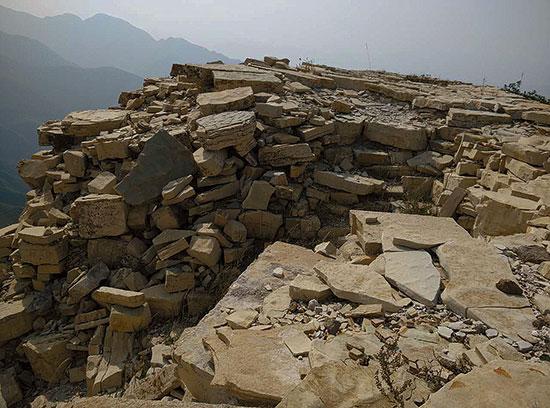
The Great Wall is vanishing, with less than 10% of the total stretch of more than 20,000 kilometers remaining in good condition, according to a report unveiled by China Youth News on Oct 9.
Badly damaged
The current concept of the Great Wall refers to the sections built during the Ming Dynasty (1368 - 1644 AD). According to official statistics released in 2012 by the State Administration of Cultural Heritage, this area totals 21,196 kilometers, with more than 90% of the wall badly damaged. Apart from the popular tourist centers, such as Badaling in Beijing and Shanhaiguan in Qinhuangdao, most of the giant fortification is under the threat of vanishing.
"Without protection funding, we just cannot stop it from collapsing," said Li Dingyuan, curator of the Huailai County Museum in Zhangjiakou city, Heibei province. "When I inspected the Great Wall in 1982, the section here in Chenjiabao town (in Huailai county) was in good condition. But now several parts are gone."
A section of the Great Wall in Huailai country was once called "standard Great Wall", due to its high level of quality construction. At the beginning of the Ming Dynasty, this section was set as an example for further construction. However, the 3,000 meters stretch of the wall has almost vanished, with only a little platform left.
The Great Wall suffered a series of factitious 'disasters' over the years, Li said. Before the 1980s, poverty-stricken people in villages often tore down edifices to use the bricks to build their own houses. After the country's reform and opening-up, new tourism trends brought further damage to the sites.
Gradually, damage was stopped after the release of Great Wall Protection Regulations by the State Council in 2006. However, money to maintain the wall remains another problem.
"Three to five spots are breaking down every year, but we don't have money (to fix it). We haven't received funds from any institution Meanwhile, economic development in the region put further pressure on cultural heritage protection. Before the regulations were issued, parts of the Great Wall were often destroyed and gave way to infrastructure construction, such as highways, according to Zhang Yimeng, deputy director of the Archaeology Institution of Zhang Jiakou city.
Funding distribution uneven
"The Great Wall has received a total of 100 million yuan ($15.79 million) for its protection every year since 2006," Zhang said. However, the giant structure stretches over 20,000 kilometers and passes across more than 400 counties, which means that one average, one kilometer of the wall received less than 5,000 RMB ($789.5) for restoration and protection. Therefore, a reasonable distribution of the limited money becomes essential.
"What was done is development-oriented. The money is used in the places where business can be developed, such as Badaling and Shanhaiguan Great Wall tourist spots," Zhang said, "but such places are not where the protection is most needed. Some sections of the wall are in the desert or prairie, and they are at the edge of disappearing."
Based on China Youth News' report, the distribution of funds for cultural heritage is rather uneven. For example, in Zhangjiakou city, the Great Wall section in Dajingmen gets 6.2 million yuan ($980,000) whereas Jimingyi village (an ancient village in Huailai county, Zhangjiakou city) receives 500 million yuan ($78.95million),more than eight times that given to Dajingmen.
The Great Wall was listed as a World Cultural Heritage in 1987. The history of the Great Wall dates back to the Zhou dynasty (1,046 BC to 771 AD) and the construction was extended and restored through different times. The section built in the Ming Dynasty (1368 - 1644 AD) is the most essential and complete part. It starts in Hushan, Liaoning province, in the east and ends at Jia Yuguan, Gansu province, in the west, crossing different regions of the country, such as Hebei, Tianjin, Beijing, Shanxi, Inner Mongolia and Qinghai.





